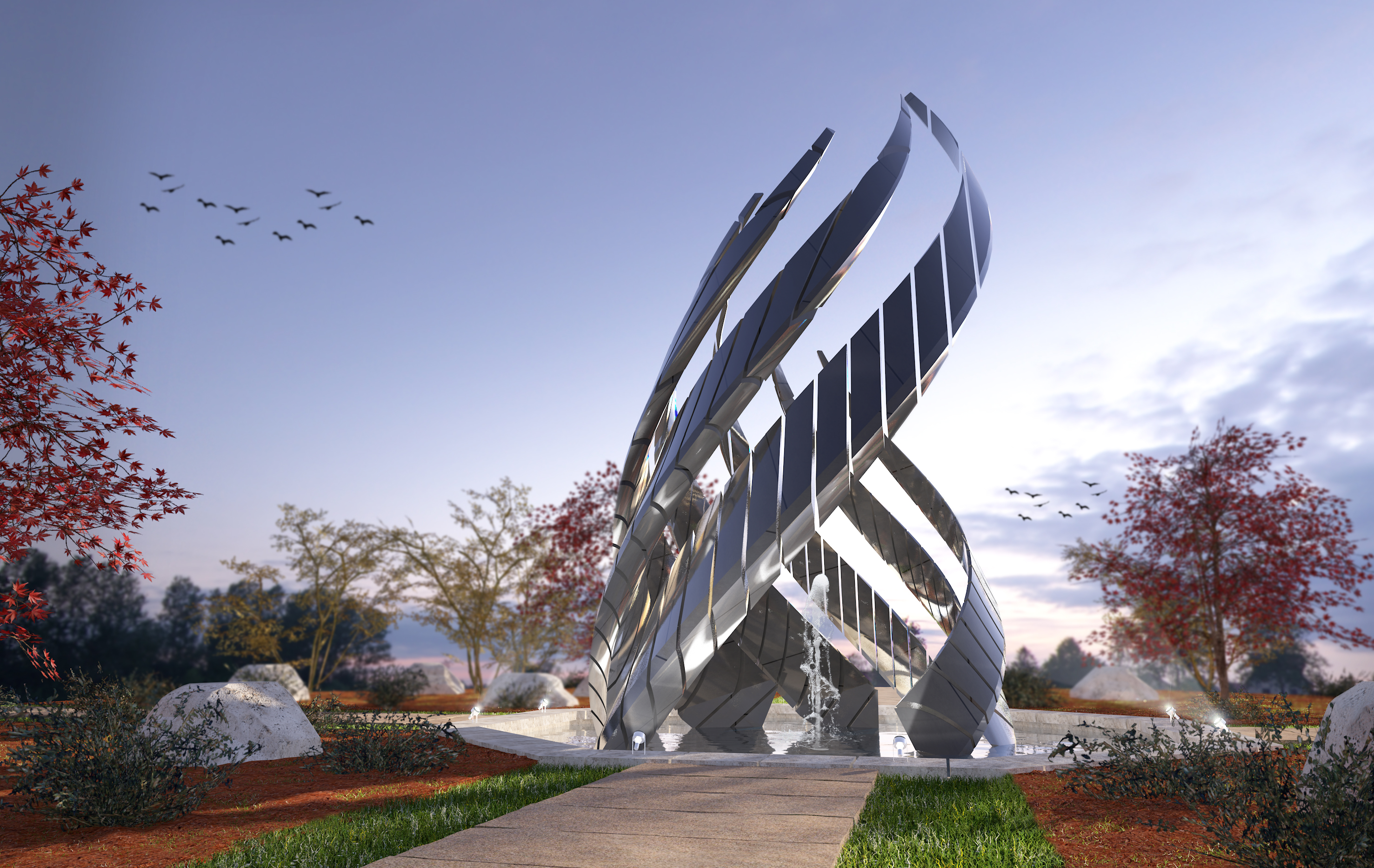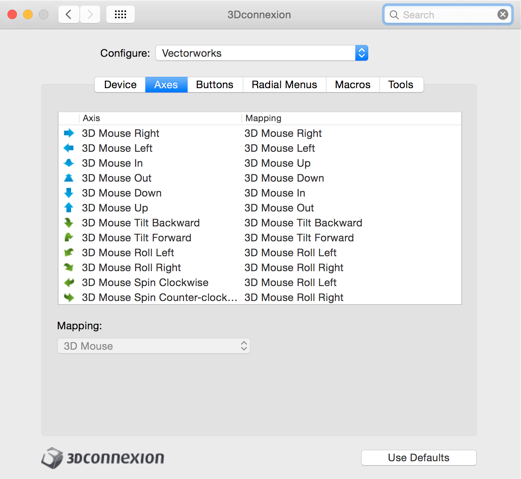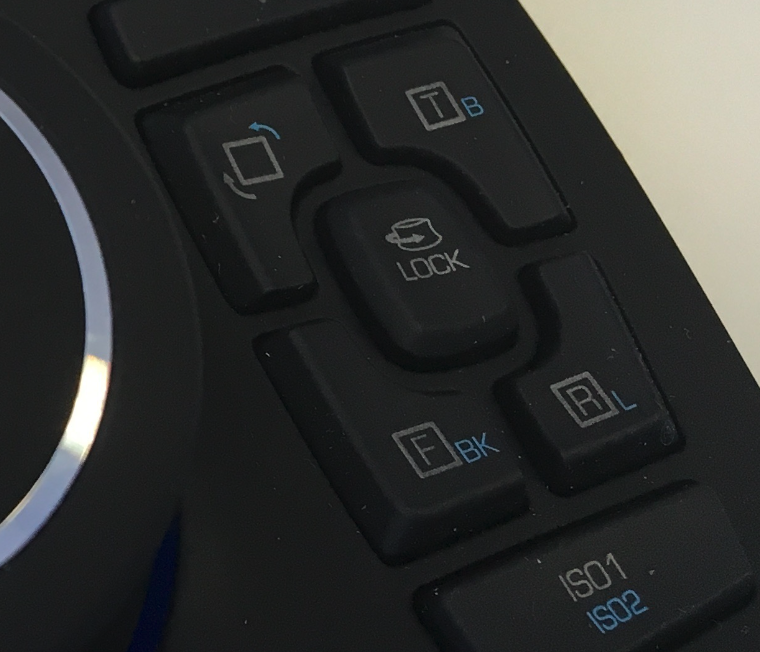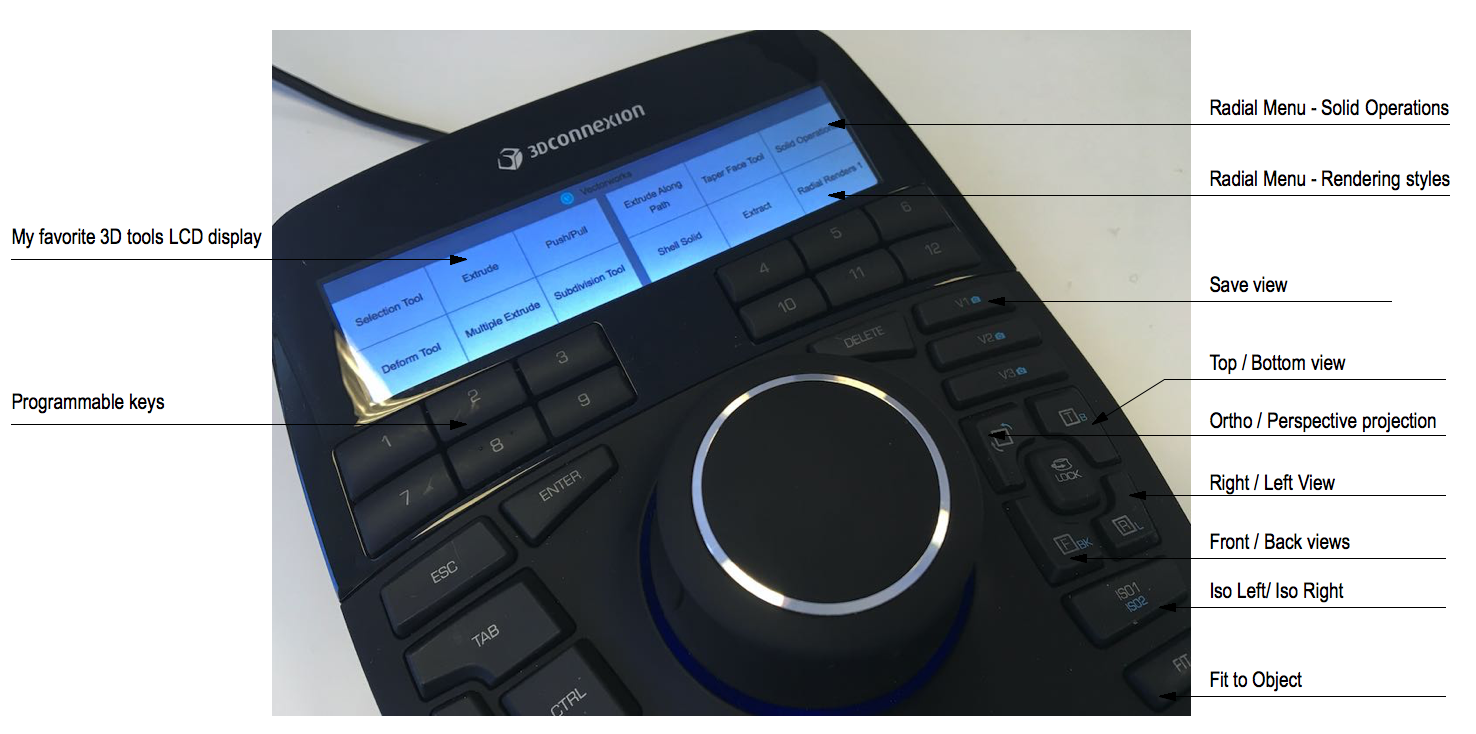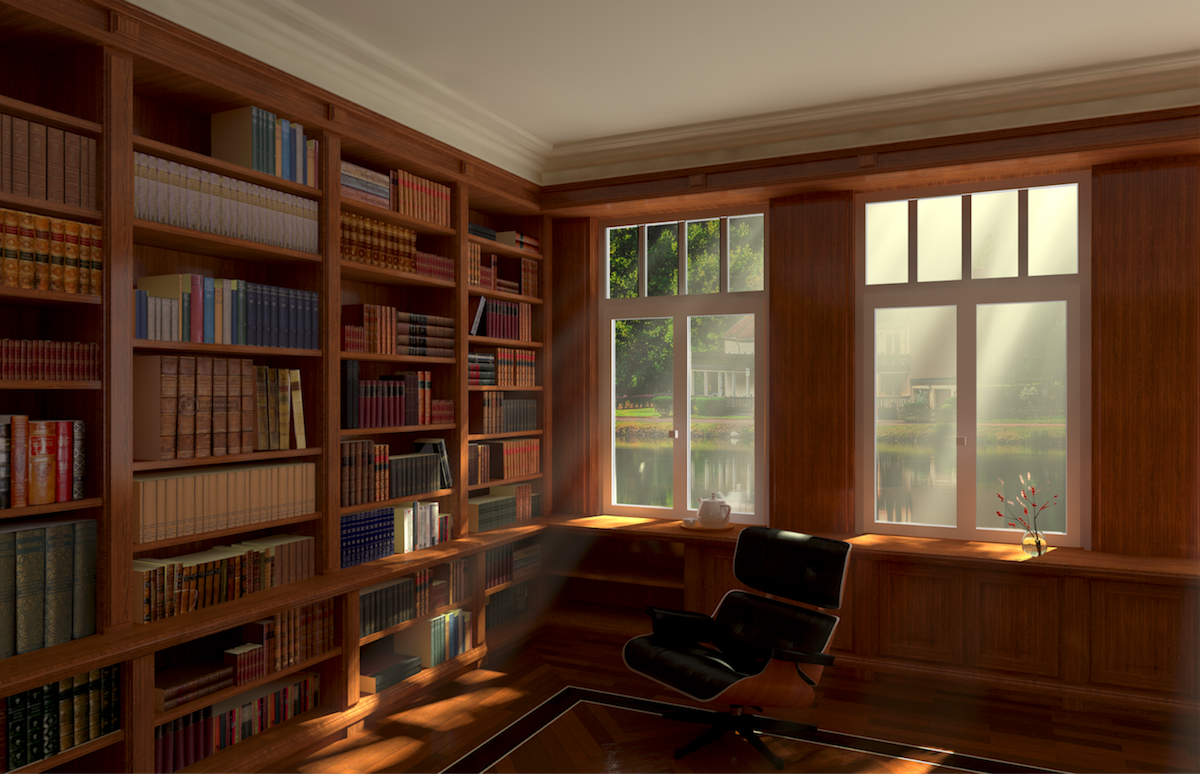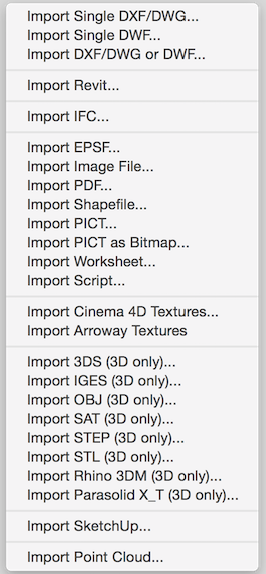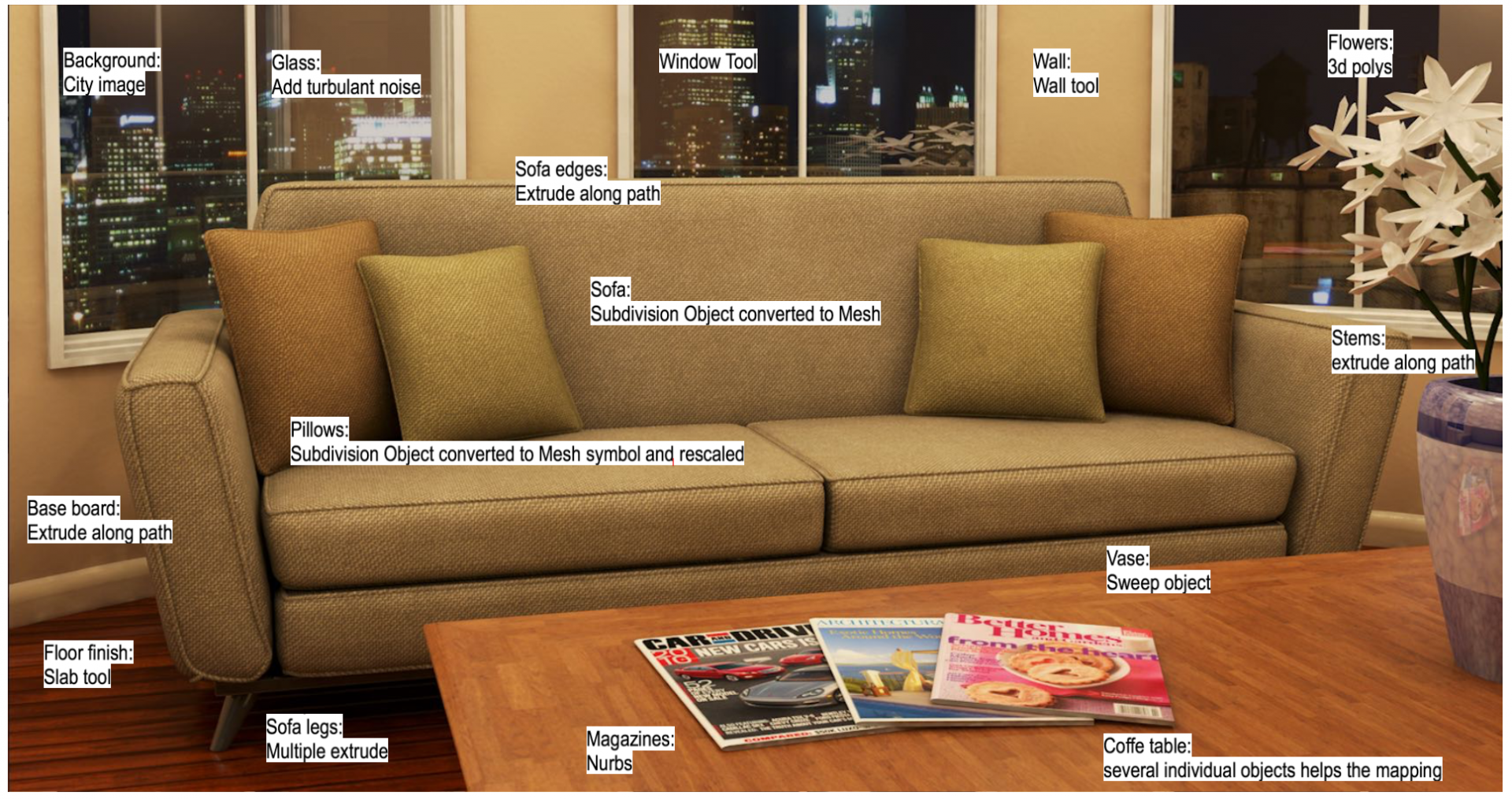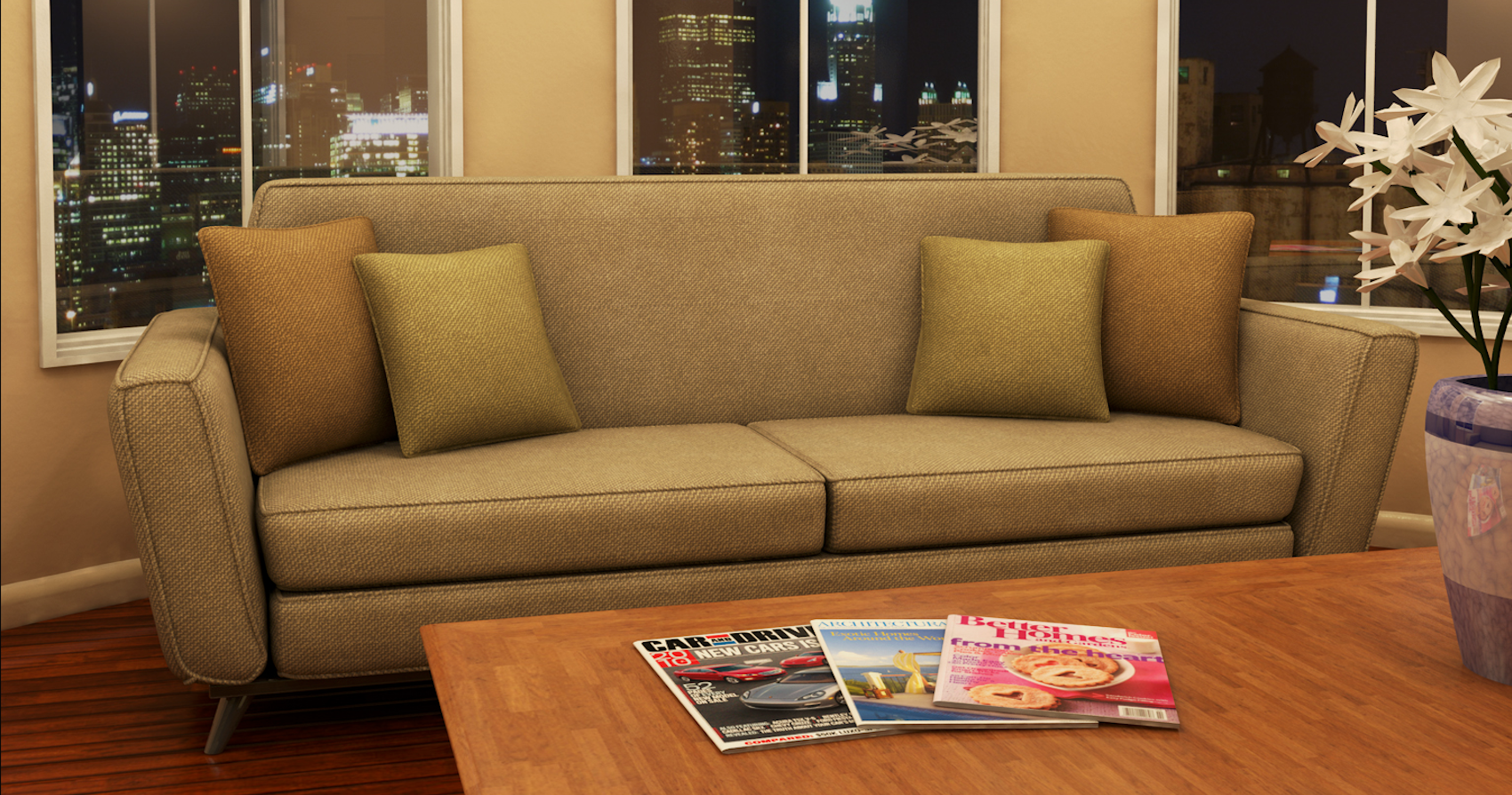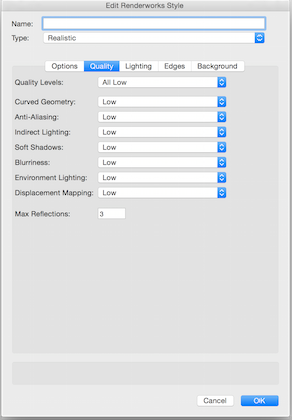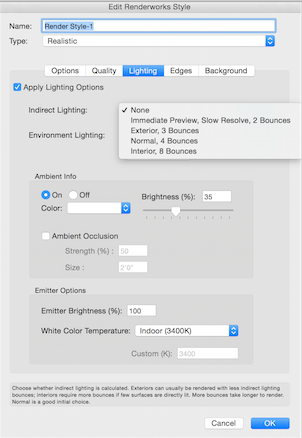-
Posts
456 -
Joined
-
Last visited
Content Type
Profiles
Forums
Events
Articles
Marionette
Store
Everything posted by Luis M Ruiz
-
Black line appearing in final render in viewport
Luis M Ruiz replied to Helen Palmer's topic in Rendering
I'd say some intruder 2d lines are not helping the scene -
-
Try switching your view to perspective normal and set navigation mode to helicopter. It seems to me this is the only way I work with it now. Rare for me to model in isometric or attempting to rotate objects to add or select geometry surfaces.
-
3d fanatics. If you are interesting on more 3dconnexion "hands-on" experience, join us this year at our Design Summit Baltimore. We'll have these devices available at our 3d modeling workshop. Plus you'll get to take a selfie with our own super @JimW http://www.vectorworks.net/design-summit
-
I have one suggestion (an insider tip) For renderings, abandon use of area or line lights and replace by using glow shaders and custom IES lights.
-
@Andrew Daviesif you look closely to the view keys, these have a box with a letter and a small letter in blue color, this means that if I press the key at a normal speed I can switch to a view, say right but if I keep holding the key down a bit longer I invoke Left. Same aspects with the other keys. Totally I have at my disposal 35 shortcuts. That also means I am getting lazy at moving the mouse, click the menu and scroll until I find what I need.
-
Hello 3d fanatics. Yes, I've been using these devices for a couple of years and this one is newest baby. Can't live without it. And yes, it made my modeling much faster and fun but I have to share some insides, I had to create a special workspace (copy of Architect) and add some shortcuts so I can create special macros. I think I added must of them to my favorite tools and menus keys (LCD display). Here is a pict of how I configured it.
-
Now, I wish I can get to this level someday. @Stephan Moenninghoff Every student requires a master and we can all learn things from this good friend.
-
Remember I mentioned, starting a sofa with subdivision but then transform it to another object depending on the mapping capabilities. In the case of this object the sofa got converted to a mesh.
-
Sharing the sofa file: v2017 sofa.vwx
-
That is a super pro for the software, the ability to import different formats and I am sure the list will keep expanding.
-
-
An important part of modeling and texturing items is knowing the pros and cons of mapping behavior on certain objects, mesh, polys, nurbs, etc. Recently more and more I rely on subdivision objects to get me the solid shapes I need and later convert it o a mesh or whatever is required. Here is a sample of how a tailored scene started with a simple subdivision sofa and some light and texturing control.
-
Here is my workflow as I need to test material and lights in Renderworks: I set up a viewport, say 7" x 4", set resolution to less than 50dpis and render using fast Renderworks or a render style but don't use high results (shadows, blur, etc) and do not check antialiasing, don't need it. Also, if I use a render style go for the "render preview". These settings will give me a pretty good idea where I stand in terms of materials, light, camera view, etc. Once I am confident with then I create a larger page, say C size and set resolution to 300dpi and I let it cook, like I said before, here is where I use the cloud to my advantage. Back in the days I used and promoted Artlantis intensively, did my tour, learn the knowledge and provided the services needed, can't complained. But my clients after selling the idea of the project needed to move on to construction docs and that's when I wished I had the best of two worlds in a single solution. Now, things are different, I can render, produce drawings, and estimates and all for the same price and without leaving my environment, is it worth the effort? I'd say certainly, designers who know all aspects of this application are appreciated and very valuable around the globe. I get to see this first hand. Now, what I'd really like is to see animation done here but that is my secret wish until then C4D all the way. ArboledaC4D animation.mov
-
I'd try making a copy of that viewport and render it using artistic lines and shadows. Make the lines super thin and make the shadows black. You'll have the model white solid. If you were thinking on using Photoshop then the deleting the whiteness will be easy.
-
Since I am creating more and more images for use in Power Point presentations and also passing material to our graphics team, once the viewports are ready, I've been exporting directly to PDF. What is interesting is that more and more I make use of my Vectorworks cloud account and take advantage of my Nomad folder to let it take care of updating the file and creating the pdfs I need. That way I manage to get production going in two places at the same time. I invite you to give it a try.
-
It looks to me from the image I saw the glow effect of the screens is set very high, is it?
-
In my personal opinion, I think renderings start by observing details and making a list of items that will make part of the overall scene. A rendering can be very shallow or very intense and elaborated, plus on top of that if you are going for realistic like Stephan M said one time, you have to make things look old and used, scratches here and there, dust, a bit of dirt or coffee stains over a newspaper, that level of realism. Yes, details take time but so is a painting but must important, you have to enjoy the process. Now, what makes a list of learning items when it comes to rendering? I'd say, everything start with knowing how to 3d model, we are not making flat illustration here, we'll be working with volumes. Then lights, very important aspect and light comes from different sources and different intensities, environmental, direct lights, points and custom sources. Shadows, another topic, blur vs straight cast, make a big difference. Textures and their characteristics, some are shiny, some are very dull, some emanate light and others need bump, noise, etc. and don't get me started on the mapping. Creating and selecting the right materials takes dedication, then again for an indoor shot, if we are collaborating with a professional interior designer then the selection is all up to them, all we do is match. Camera composition, just like a smart photographer selects the best angle, that helps to tell the story. And finally, the rendering style, lights settings, detail control, backgrounds and final size and of course having a fast computer helps. I'd recommend checking out the training videos posted on our youtube channel (I so wish we had those when I started doing renderings). As promised, here is the file, v2017 Wes_Lamp_render.vwx.zip
-
Drawings, 3d modeling, spreadsheets, renderings, all in the same software? I know it sounds too good but every aspect requires information, practice and a good coach. Here is a small practice project I did a few months ago. File available on demand.
-
let's go over a check list. What vwx version? Mac or win? type of computer? Viewports on a sheet? what's the sheet size? Sheet resolution? save document cash on? what settings are you using for your rendered viewports? (custom, high quality, rendering style)
-
@allan woodwell sorry Allan, my post was addressing jmolina. Thanks for the help you offered.
-
I am sure Jim will appreciate a bit more information: vwx version # Platform Type of computer Operating system Graphics card information an include a copy of the file if possible Providing these variables always helps to get to the bottom of the mystery.
-
don't step it
-
Suggestions for render texture for lake water surface please
Luis M Ruiz replied to Helen Palmer's topic in Rendering
I learned that water, glass and any reflecting material can only sing when they have something to reflect. having an HDRI backgrounds helps but you can also control the environmental reflection in render styles. For example, you can have a blue sky in the back and your glass reflect a forest in fire. -
playlist for some VW related items
Luis M Ruiz replied to digitalcarbon's topic in General Discussion
Got it saved on my favorites. thank you Mike.

